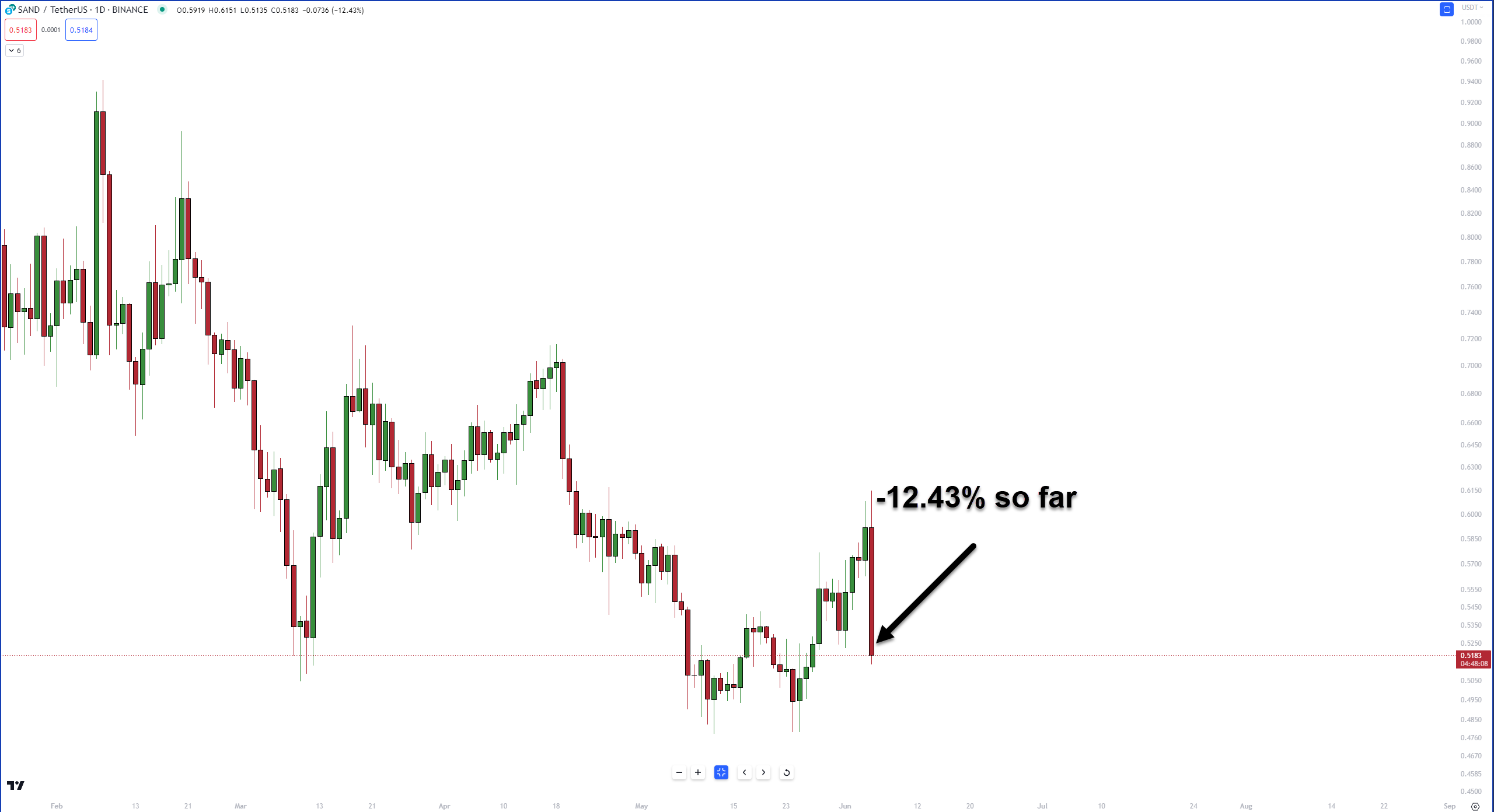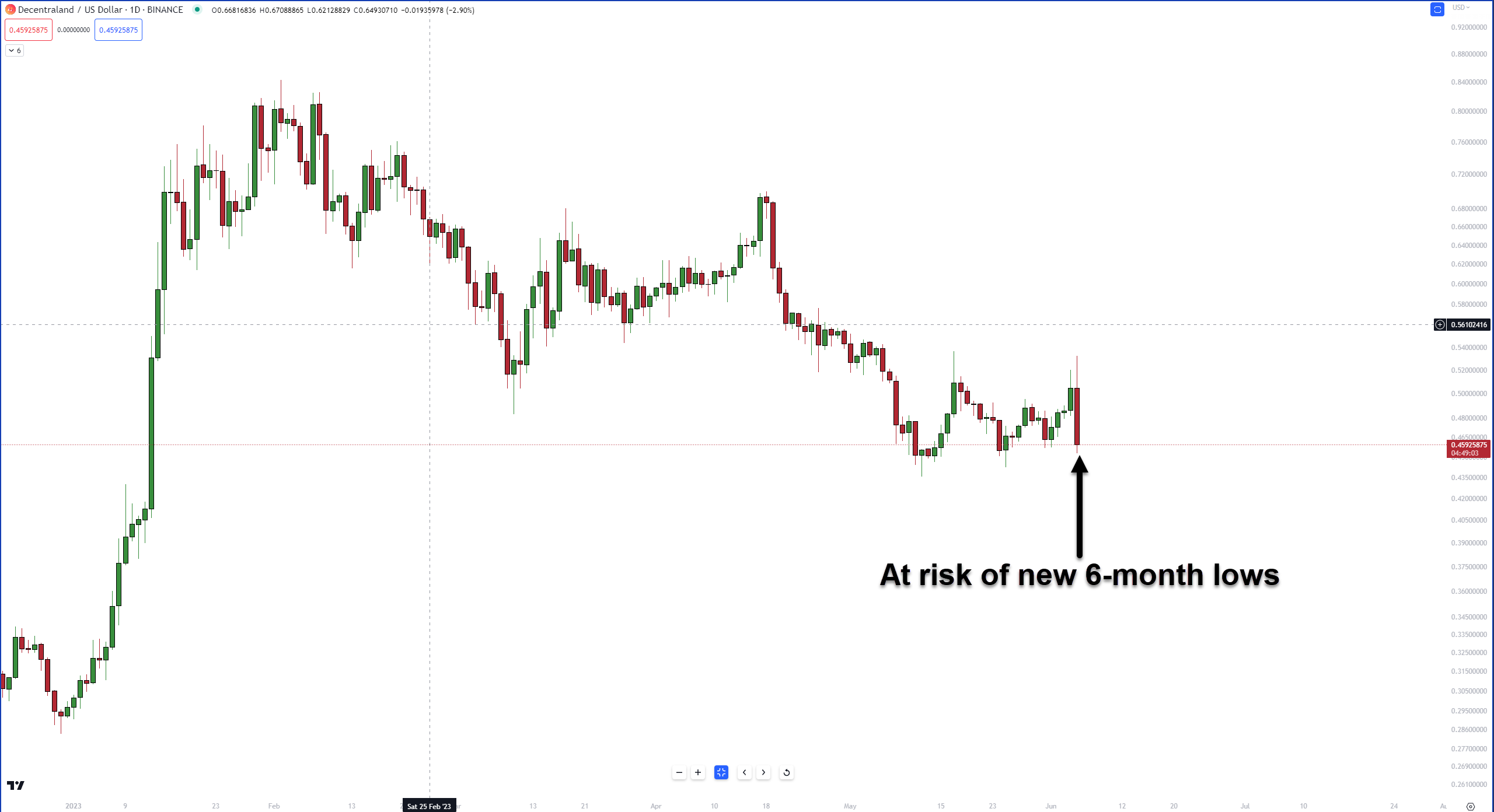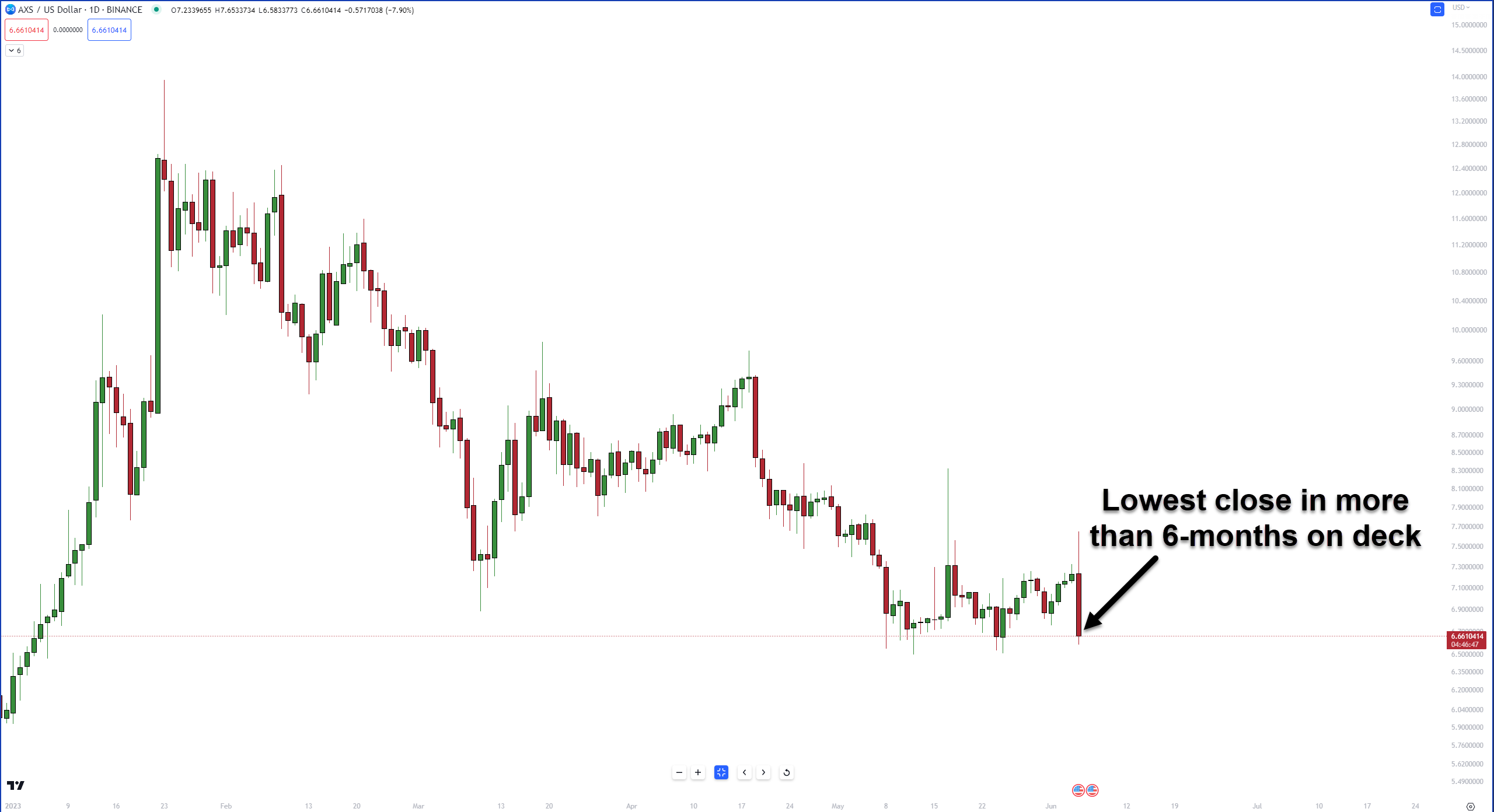The Sandbox

The SEC contends that The Sandbox’s native token, $SAND, qualifies as a security for the following reasons, as explained in their filing:
Founders and Development: The Sandbox, a virtual gaming platform, was originally created in 2012 by Pixowl, Inc. Animoca Brands acquired the company in 2018, which then developed a new 3D version of the Sandbox using blockchain technology. The founders, Arthur Madrid and Sebastien Borget have remained actively involved, with Madrid serving as the CEO of TSB Gaming Ltd (TSB), a wholly-owned subsidiary of Animoca, and Borget as the COO.
Token Characteristics: TSB minted a fixed supply of 3 billion SAND tokens on the Ethereum blockchain. Token holders can earn more SAND through staking, participating in the platform’s governance, or receiving rewards from the staking program on the platform.
Token Sales: The entity conducted several rounds of SAND sales between 2019 and 2020, raising funds for the development of the network. In 2019, Animoca raised approximately $2.5 million through TSB via the issue of Simple Agreements for Future Equity (SAFEs) and SAND tokens. Furthermore, about 19% of SAND was reserved for Sandbox founders and the team, and another 25.8% was allocated to the Company Reserve.
Economic Incentives: The Sandbox’s Whitepaper highlighted that SAND tokens were anticipated to provide economic incentives for users to engage in activities or deliver services that would benefit the entire ecosystem on The Sandbox platform.
Expectation of Profit: Information disseminated publicly by TSB has led SAND holders to reasonably expect profits from TSB’s efforts to grow the Sandbox protocol. The growth would, in turn, increase the demand for and value of SAND.
Public Statements and Updates: The Sandbox has frequently announced platform growth and developments and when SAND was made available for trading on different platforms. The Sandbox’s founders have also regularly promoted the platform on social media, encouraging SAND purchasers to view SAND as an investment.
Token Scarcity: TSB has publicly declared that it would control the supply of SAND tokens and has implemented a “controllable supply mechanism,” suggesting a decrease in the total supply of SAND and leading investors to reasonably view their purchase of SAND as having potential for profit due to the mechanism to reduce supply and increase the price of SAND.
Thus, the SEC’s claim is based on the founders’ role in The Sandbox’s development and promotion, the economic incentives linked to SAND, the use of funds raised from SAND sales for the development and expansion of The Sandbox platform, and the expectation of profit by SAND holders.
Decentraland

The SEC posits that Decentraland’s native token, $MANA, classifies as a security for the reasons delineated in their filing:
Founders and Development: Decentraland, a virtual reality platform, commenced its development phase in June 2015 and was officially launched to the public in February 2020. Decentraland was launched by Metaverse Holdings, led by a team of individual developers: Ariel Meilich, Esteban Ordano, Manual Araoz, and Yemel Jardi. The platform operates on the Ethereum blockchain.
Token Characteristics: Decentraland minted MANA as the digital token integral to all transactions within the Decentraland virtual reality ecosystem. Presently, there is a total supply of approximately 2.19 billion MANA tokens.
Token Sales: Decentraland held an ICO for MANA tokens in exchange for ETH on August 18, 2017, raising approximately $24.1 million. It offered early contributors to the Decentraland ecosystem a discounted price when purchasing MANA. Since August 2020, MANA has been available for buying, selling, and trading on the Binance Platforms.
Expectation of Profit: Information disseminated publicly by Decentraland has led MANA holders to reasonably expect profits from Decentraland’s efforts to grow the Decentraland protocol. The growth would, in turn, increase demand for and value of MANA.
Use of Funds: Investor proceeds raised during the MANA ICO were pooled to fund the marketing, business expenses, and completion of the Decentraland platform. According to a blog post published by Jardi, Decentraland’s top priority for using the revenue was to develop a virtual world, focusing on the continued improvement of the end-user experience even after the creation of Decentraland.
Token Supply Management: Meilich explained that after the ICO, Decentraland would implement a “Continuous Token Model,” where the MANA supply would be increased by 8% in the first year, followed by a lower rate in subsequent years.
Foundation and Token Distribution: The Decentraland Foundation was created in April 2020, holding the intellectual property rights over and offering the products and services on the Decentraland platform. The distribution of the initial supply of MANA tokens issued at the ICO was as follows: 20% to the founding team, advisors, and early contributors; 20% to the Foundation; 40% available for purchase by the public; and 20% reserved to incentivize early users, developers, and partners.
Token Burning: Decentraland’s Whitepaper and website have marketed that the protocol “burns” (or destroys) MANA tokens when used within the Decentraland ecosystem, implying a reduction in the total supply of MANA and leading investors to reasonably view their purchase of MANA as having potential for profit due to the built-in mechanism to decrease supply and increase the price of MANA.
Thus, the SEC’s claim is based on the founders’ role in Decentraland’s development and promotion, the economic incentives tied to MANA, the use of funds raised from MANA sales for the development and expansion of the Decentraland platform, and the expectation of profit by MANA holders.
Axie Infinity

The Securities and Exchange Commission (SEC) contends that Axie Infinity Shards (AXS) should be classified as a security based on the following points outlined in their filing:
-
Founders and Development: Axie Infinity is a blockchain game created by Sky Mavis PTE LTD, led by CEO Trung Nguyen and COO Aleksander Leonard Larsen. The team is crucial in product development, marketing, digital design, and software engineering decisions.
-
Token Distribution: AXS tokens are native to the Axie Infinity game and can be earned by players through successful gameplay or purchased for in-game transactions. The total supply of AXS is 270 million, with over 100 million currently in circulation.
-
Token Sales: In 2020, Sky Mavis conducted a private sale of AXS tokens to strategic investors, raising approximately $864,000. A public sale followed, distributing 29.7 million AXS tokens and raising $2.9 million for Axie. The discounted offering to strategic investors, coupled with an unlocking schedule, indicates an investment aspect.
-
Trading Platforms: AXS has been available for buying, selling, and trading on Binance.com and Binance.US platforms since October 2020 and November 2021, respectively.
-
Expectation of Profit: Information publicly disseminated by Sky Mavis has led AXS holders, particularly those who purchased after August 2021, to view AXS as an investment with profit expectations. Sky Mavis allocated the funds raised from the token offerings to developmental expenses, administrative costs, business development, and marketing.
-
Development and Growth Efforts: The whitepaper and public statements from Sky Mavis highlight their commitment to developing and improving the Axie game. The team’s expertise, roles, and backgrounds are emphasized, along with the gradual unlocking of AXS tokens to align incentives.
Considering these factors, the SEC argues that AXS meets the criteria of a security under the Howey Test due to the involvement of a centralized team, the expectation of profit based on Sky Mavis’s efforts, and the investment nature associated with AXS transactions.
